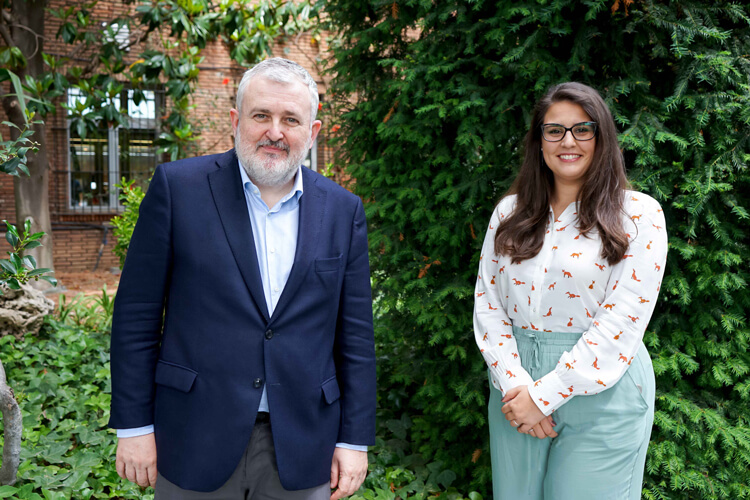Bacteriophobic Nanostructured Surfaces

Around 80% of infections detected in the urinary tract are related to the use of a urinary catheter. These infections can become persistent or chronic over prolonged periods of use. There are two types of treatments for these infections: either with antibiotics, which present the problem of bacteria that are resistant to them, or by flushing the catheters with a saline solution. However, the problem of bacteria colonization persists as bacteria are capable of adhering to the surface of the catheter and remaining there, becoming a bacterial reservoir.
There are examples of super-hydrophobic surfaces in nature, both in plants and animals, with nanostructured topographies that manage to prevent bacteria from adhering to them. Silver, for example, is an element that makes it possible to obtain different surfaces with such properties. Thus, in a bio-inspired approach, the solution appears to be using a micro, nanostructured surface with silver coatings.
Within this context, Dr Cristina García Bonillo defended her doctoral thesis at IQS, entitled Nanostructured silver-based bacteriophobic surfaces against catheter-associated urinary tract infections. Her thesis was conducted within the Materials Engineering Group (GEMAT) at the IQS School of Engineering under the supervision of Dr Salvador Borrós, and featured collaboration from the company Tractivus, an IQS spinoff. Dr García Bonillo’s thesis also fell under the Government of Catalonia’s Industrial Doctorates Plan, supported by co-financing between the company Laboratorios Rubió and the IQS School of Engineering (Ramon Llull University).
Bacteriophobic urinary catheter
En esta tesis se ha desarrollado un catéter urinario tipo Foley con características bacteriofóbicas. El catéter está basado en un recubrimiento super-hidrofóbico micro- y nano-estructurado con una topografía específica y recubierto por una película de plata metálica homogénea. Esta película crea un ambiente incómodo para las bacterias, evitando su adhesión a la superficie, pero sin provocar ningún efecto sobre el crecimiento bacteriano, lo que beneficia al paciente al proteger su propia microbiota.
Para conseguirlo, se generaron un conjunto de recubrimientos nano-estructurados super-hidrofóbicos basados en diferentes polímeros con base de metacrilato de pentafluorofenilo polimerizado por plasma (pp-PFM) y polidopamina (PDA), recubiertos con una fina película de plata metálica. Estas estructuras son capaces de adaptarse a la morfología del catéter urinario y a su movimiento sin deslaminarse ni romperse. Todos ellos mostraron una reducción en la adhesión bacteriana de entre cuatro y seis órdenes de magnitud con respecto al polidimetilsiloxano (PDMS) sin recubrir, así como capacidad para repeler la adhesión de proteínas en ensayos in vitro.
El recubrimiento basado en PDA-plata fue el seleccionado para ser implementado en el prototipo del catéter urinario. Este recubrimiento consiguió mantener el efecto bacteriofóbico durante treinta días en las pruebas realizadas in vitro, con ensayos de uso simulado en condiciones de flujo y estáticas, utilizando cepas bacterianas uropatógenas y aislados clínicos.
Finalmente, el catéter ha sido validado in vivo utilizando cerdos como modelo animal cateterizados durante quince días. Durante este período, el catéter pudo mantener la adhesión bacteriana dos órdenes de magnitud por debajo de los catéteres estándar comerciales y los catéteres comerciales con propiedades antimicrobianas, siendo así una clara alternativa a las sondas actuales.
Industrial Doctorates Plan
El objetivo del Plan de Doctorados Industriales es contribuir a la competitividad e internacionalización de la industria catalana, reforzar los instrumentos para captar el talento que genera el país y situar a los futuros doctores en condiciones de desarrollar proyectos de I+D+i en una empresa.
El elemento esencial del proceso de doctorado industrial es el proyecto de investigación de la empresa o institución en la que el doctorando desarrolla su formación investigadora, en colaboración con una universidad o centro de investigación, y que es objeto de una tesis doctoral. Los doctorados industriales actúan, así, como puente de transferencia de conocimiento y contribuyen a estrechar las relaciones entre el tejido industrial y las universidades y centros de investigación.


